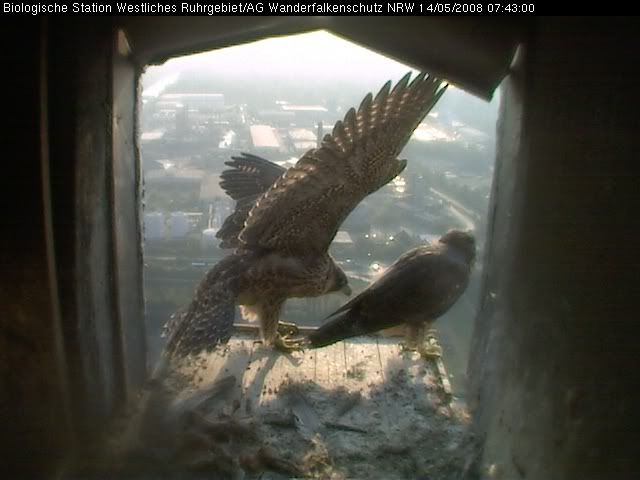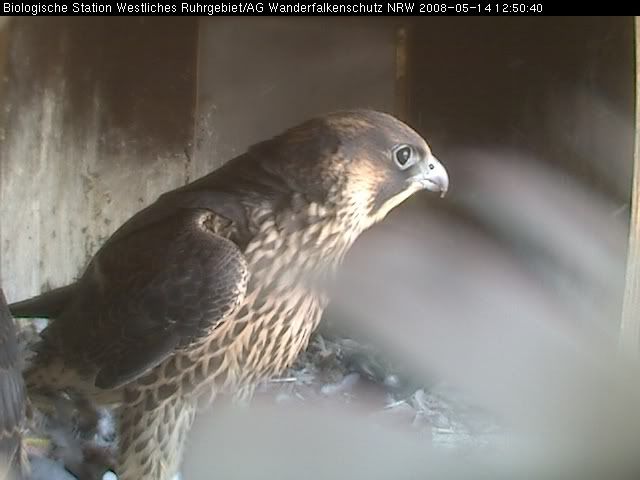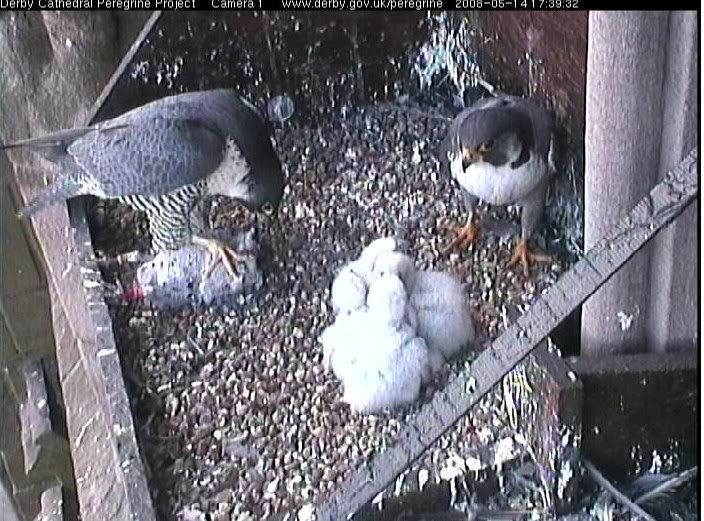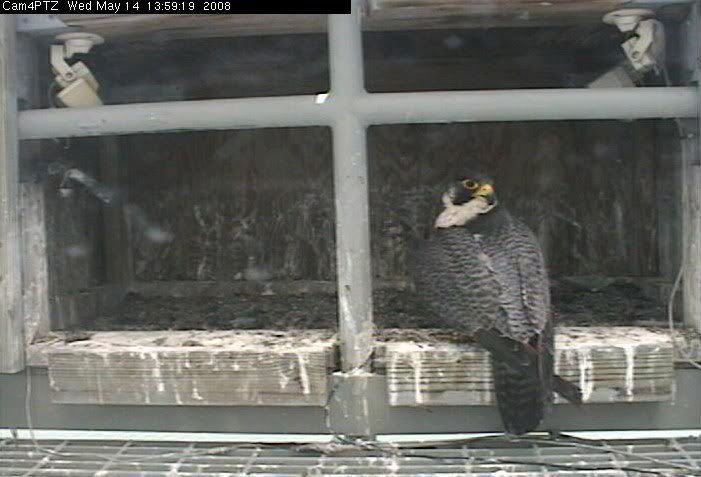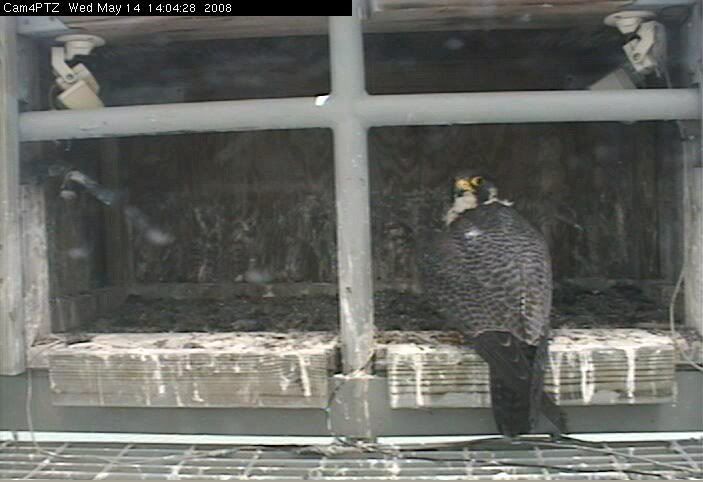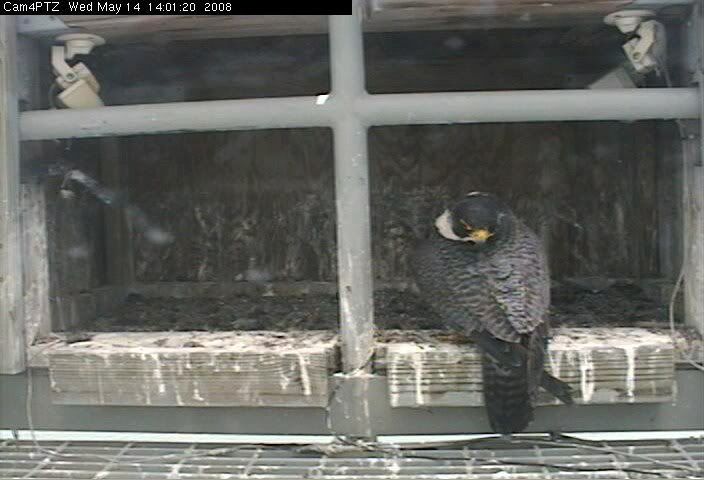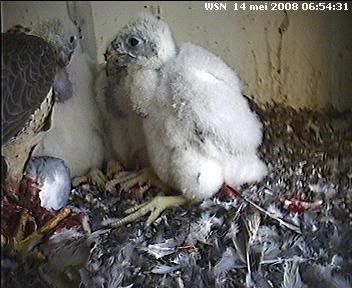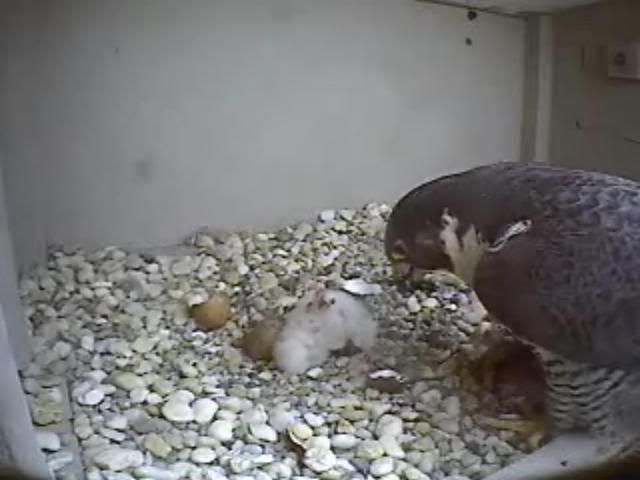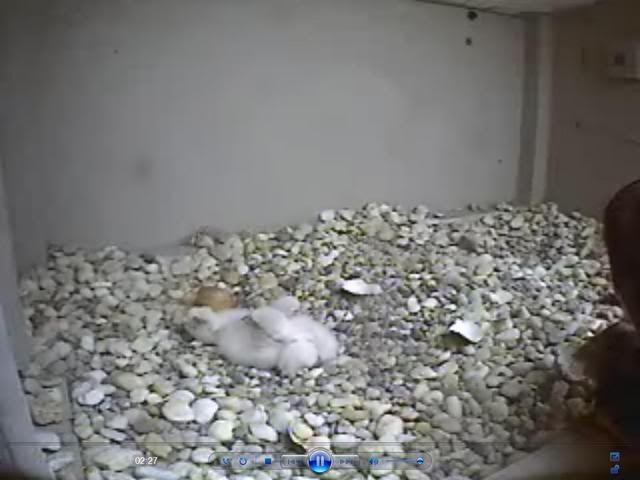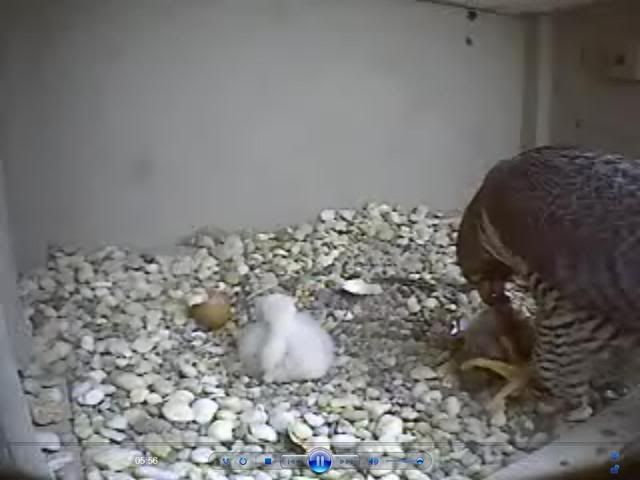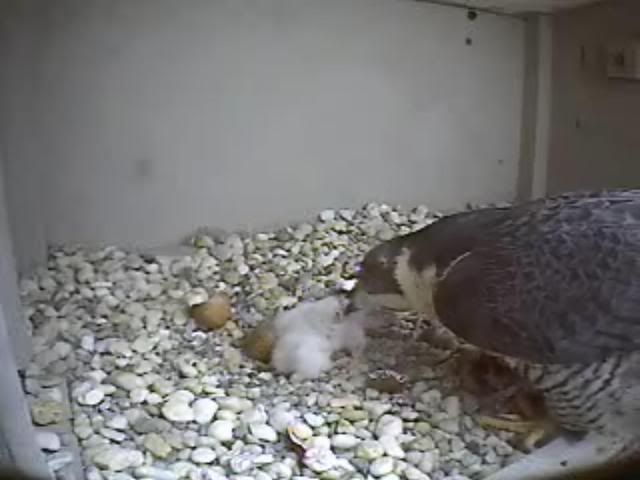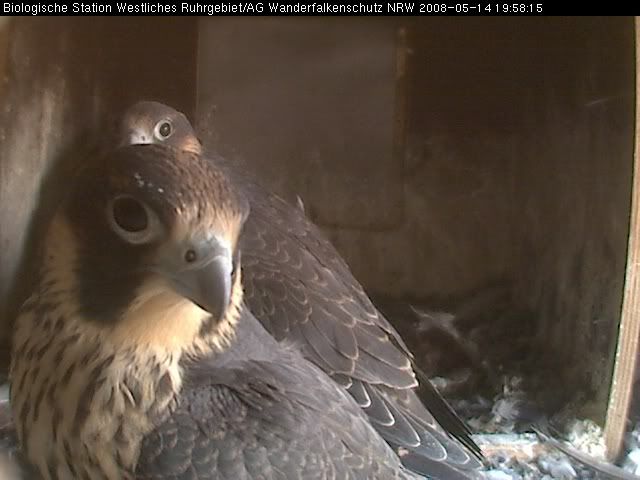
With all the eyases around it might be interesting to take a look at the subject feathers. For one the maine part of the transformation proces of eyas into juvenile is the growth of the juvenile plumage.
What is a feather, how does it grow, and what about the plumage of the juvi's.
Feathers are unique to birds. They provide insulation, camouflage, protection, water repellency and display. In some species of birds, the feathers of the male and female are identical, like in the peregrine falcon.. We call them monomorphic - meaning their sex can't be determined by their physical appearance.
Anatomy of the feather
Feathers are made out of
keratin, the same protein found in hair and nails. Feathers have a central shaft. The smooth, unpigmented base, which extends under the skin into the feather follicle is called the
calamus. A feather is composed of several parts. The calamus is the short, tubular portion that is embedded in the feather follicle and is below the skin. The embedded tip of the calamus contains an opening known as the
inferior umbilicus. The calamus of growing wings and tail feathers contains pulp (vascular connective tissue) and a small artery and vein. These young feathers are known as "
blood feathers" because they will bleed if they are damaged. As these feathers mature, the pulp regresses, the vessels degenerate and the calamus becomes hollow.
 Anatomy of the feather
Anatomy of the featherAll the feathers we watch growing in the eyases and juvi's are bloodfeathers. They are still growing and need nutrients and oxygen to metabolise and grow into healthy and strong feathers. Eyaes who are not fed enough develope stress marks on their feathers.
The long tubular portion of the feather above the skin is the
rachis. It is a continuation of the calamus above the skin. The proximal portion of the rachis (the portion nearest the body), like the calamus is also vascularized in the developing feather. The term shaft refers to both the calamus and rachis.
On each side of the rachis there is a set of filaments, called
barbs, which come off at approximately a 45º angle. This portion of the feather that has barbs is called the vane. In the larger feathers, these barbs have two sets of microscopic filaments called
barbules.Barbules from one barb cross the adjacent barbs at a 90º angle. Barbules, in turn, have hooklets, sometimes called hamuli or barbicels, which hook the barbules together, like a zipper, forming a tight, smooth surface. These maintain the shape of the feather. Without these strong linkages, the feather would not be able to withstand the air resistance during flight. The barbs or hooklets may become separated from each other; if this occurs, the bird can reattach them while preening. This ensures the waterproofing or insulation capabilities of the feathers. The vane of the feather may be soft and downy (plumulaceous) or compact and closely knit (pennaceous). A small opening, the superior umbilicus is located at the junction of the rachis and calamus. A small feather known as an after feather is often attached to this small opening.At the base of the feathers, there are often barbs that are not hooked together. These are called downy barbs.
Feathers with barbules and hooklets are termed "
pennaceous," and one can think of them as the feathers that would be used for a quill pen. Feathers without barbules and hooklets, such as down feathers, are called "plumaceous" and have more the appearance of a plume. Some feathers have both pennaceous and plumaceous portions.
 Transformation in progress
Transformation in progress
Types of feathersAdult or definitive down feathers of adult birds are extremely plumulaceous feathers that provide a layer of insulation underneath the contour feathers. Down feathers either lack a central rachis or sometimes have a very short rachis, shorter than the longest barbs. The barbs sometimes attach directly to the basal calamus of the feather. Down is not evenly distributed, and some groups (sea ducks, for example) have much heavier down coats than other groups (such as songbirds).
Bristles are hairlike contour feathers without vanes. They consist only of a whiskery central rachis almost bare of barbs or barbules. Not all birds have bristles (for example, the rock dove has none). Bristles are found mostly around the eye (for protection), lores, nostrils, and the rictus of the mouth (rictal bristles). Insectivorous birds are thought to use their prominent rictal bristles as sensory organs, much the way mammals use whiskers.
Contour feathers are the basic vaned feathers of the body and wings and include the large flight feathers of the wing and tail. Smaller contour feathers cover the body and have a symmetrical vane dividing them between a firm, pennaceous (having a central shaft or rachis with vanes branching off to either side) distal vane area and a soft, plumulaceous (downy) inner vane area. In some birds, the contour feathers of the body tend to have more prominenet afterfeathers than do the flight feathers.
Filoplumes are long, hairlike feathers that monitor the position of the pennaceous feathers, as those of the wings and tail. Sensory corpuscles at the base of each filoplume detect fine movements of the filoplume shaft. Filoplumes are often numerous at the bases of wing remiges to monitor the position an movement of the remiges during flight. In many passerines, they also protrude through the outer contour feathers of the crown and nape, perhaps the warning the bird when wind disrupts the smoother outer surface of the plumage.
Natal down or neossoptiles cover hatchlings. Simpler than adult down, the feathers rarely have a central rachis (except in ducks). The barbs are also simpler, having fewer barbules. Often natal down is immediately pushed out of the feather follicle by the emerging juvenile plumage and appears as a tuft at the tip of a new feather.
 Full adult plumage
Full adult plumage
Powder down consists of special feathers with barbs that disintegrate into a fine powder. They are thought to aid the bird in grooming and waterproofing its feathers. They are the only feathers that grow continuously and are never molted. Many species have widely scattered powder feathers within patches of normal down feathers, but herons and bitterns have dense, prominent patches of powder feathers on the breast and belly.
Semiplumes are between the more pennaceous contour feathers and the strictly plumulaceous down feathers, which lack a central rachis. Semiplumes always have a distinct rachis that is longer than any of the barbs. Seldom exposed, semiplumes lie under the surface of contour feathers, insulating the body and forming smooth, aerodynamic body contours.
Rectrices (singular, rectrix) are the large, vaned flight feathers of the tail. Similar in structure to the remiges of the wing, rectrices also have asymmetrical vanes.
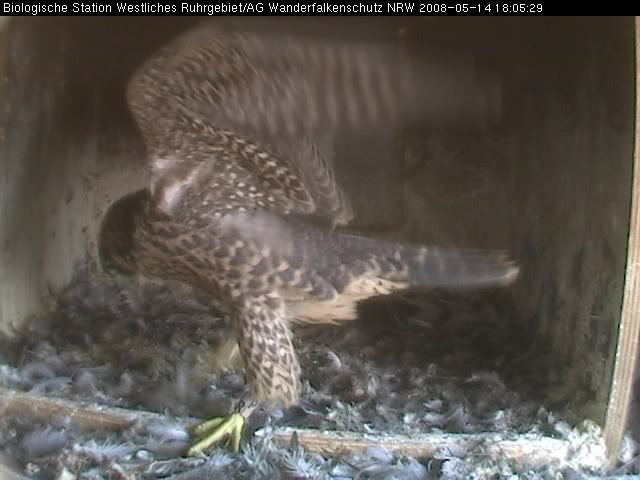 Remiges
Remiges are the flight feathers of the wing and include the primaries, secondaries, and tertiaries. Remiges (singular, remex) are pennaceous contour feathers with prominent, often asymmetrical, vanes. The primaries attach to the metacarpal (wrist) and phalangeal (finger) bones at the far end of the wing and are responsible for forward thrust. The peregrine falcon has 1o primaries and they are numbered from the inside out.The secondaries attach to the ulna, a bone in the middle of the wing, and are necessary to supply "lift." They are also used in courtship displays. There are 11 secondaries and they are numbered from the outside in.
The flight feathers closest to the body are sometimes called tertiaries and the peregrine has 3-4.
Alulas are the 3 feathers atached to the first finger and ar eused as flaps when the angle of attack is to small to attain lift. By moving the alula feathers the peregrine is able to cause an airflow over the top of the wings that will produce lift.




